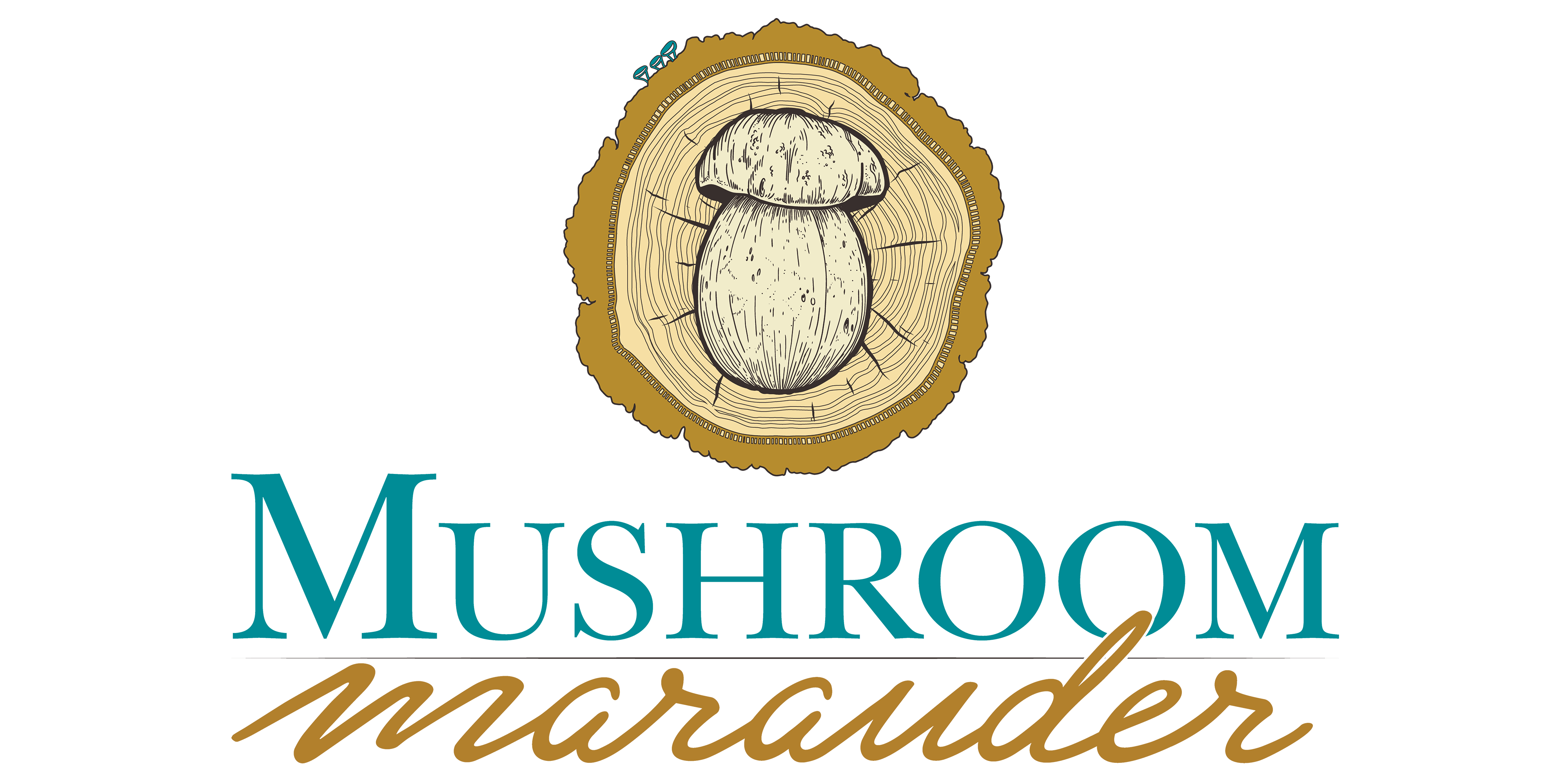Cover Photo Credit: Alan Rockefeller
Written by Adam McCrae
Gomphidius oregonensis, the Blackening Slime Spike. Photo credit Christian Schwarz
Disclaimer: Foraging wild edibles can be a fun and enjoyable experience, but it is not a game. Never eat any foraged item that has not been 100% identified as edible by someone qualified to do so. When eating a species new to you, make sure to cook thoroughly and try a very small amount the first time, to test for personal intolerance.
Gomphidius is a small genus of mushrooms containing just 10 species, every one of which is considered edible. Colloquially known as "Spike Caps" or "Slime Spikes", these interesting fungi are usually covered in a layer of peelable slime! While reports on the flavor of the cooked fresh mushrooms are lackluster, a bit of effort can turn them into a more palatable experience. The genus is quite widespread and fairly easily identified, and also has the benefit of having zero toxic mushrooms in it. It may be worth your while to take a few home, process them, and see how you like them!
**It is worth noting that Gomphidius species are known to bioaccumulate heavy metals, and should not be consumed if found in urban settings or known polluted areas.**
These mushrooms, although having a gilled appearance, belong to the order Boletales, and are considered a "Gilled Bolete"! They are more closely related to genera with pores for a spore-bearing surface like Boletus than actual gilled mushrooms like Agaricus.
It's also worth noting that Gomphidius are parasitic on certain species of Suillus. The presence of Suillus certainly doesn't guarantee Gomphidius, but it seems that Gomphidius cannot exist/fruit without Suillus mycelium present!
In this blog, we'll be going over one of the species of Gomphidius that occurs with regularity in Oregon, Gomphidius oregonensis. It is also known as the Insidious Gomphidius or Blackening Slime Spike. Before we do, let's go over a few tips to make it more likely that you'll enjoy them if you do find some!
Gomphidius Processing/Cooking tips:
-
Peel the slimy layer off the cap and stem
One of the most prominent features that Gomphidius exhibits is a distinct, thick and slimy layer covering the entire cap surface when wet. This cap layer, or "pellicle" also covers the gills of young specimens, and should be removed before any culinary use.

The thick slime layer is often strong enough to hold the weight of the entire mushroom! (Gomphidius species, not necessarily G. oregonensis)
-
Dehydrate
To help their soft texture, Gomphidius species can be dehydrated. The rehydrated mushrooms will have a better mouth-feel than their fresh counterparts. Cook thoroughly, and try to obtain a decent sear when possible.
-
Grind to Powder for Salts/Seasonings
Many people still find the texture of rehydrated Gomphidius to be less than ideal, but find them to be a great addition to many meals in the form of Mushroom Salts / Seasoning Mixtures. Just grind the heck out of the dehydrated mushrooms and add them to your salt or seasoning mixture of choice. Use the salts/seasonings like any other mushroom mixture, keeping in mind that the mushrooms have technically never been cooked, so might not be best as a finishing salt.

Map of observations of G. oregonensis, courtesy iNaturalist.
Gomphidius oregonensis description:
Cap: 1.5" to 6" across. Slimy, wet, covered in a thick and viscid layer of removable pellicle. Color varies quite a bit, generally whitish to olive/tan tones that can become pinkish when mature. Blackening in large splotches occurs on the cap as the mushroom gets older and can cover almost the entire mushroom at extreme maturity. Buttons have heavily inrolled cap margins that expand to become flat and even slightly uplifted with age. Center of cap often depressed with age.
Stipe (Stem): 0.5" - 2" thick, 2.5" to 6" long. Overall color whitish, with bright yellow occurring more prominently toward the base. Ring usually present, often with blackening from spore deposit. Usually covered in a thin layer of slime. Develops dark/black spots at it matures.
Gills: Deeply decurrent (running down the stipe), widely spaced. Whitish in youth, turning grey with maturity and also exhibiting the same blackening that occurs on the rest of the mushroom.
Flesh: White throughout, with distinct yellow at the base moving upwards.
Veil: Partial veil of translucent slime fully covers gills when in button stage, breaking to become the ring/annulus, which usually turns black from spores.
Spore deposit: Dark Purplish/Grey to Black.
Ecology: Growing scattered or in clumps, often with attached bases. Parasitic on the mycelium of Suillus caerulescens, perhaps other Suillus.
Edibility: Edible, not often consumed due to slime factor. See above tips.

G. oregonensis and its host, Suillus caerulescens. Photo credit Alan Rockefeller
Hopefully this helps with your identification of our Blackening Slime Spike, please let me know how you end up using them for the table, if you do so! Thanks for being here.
~Adam McCrae


